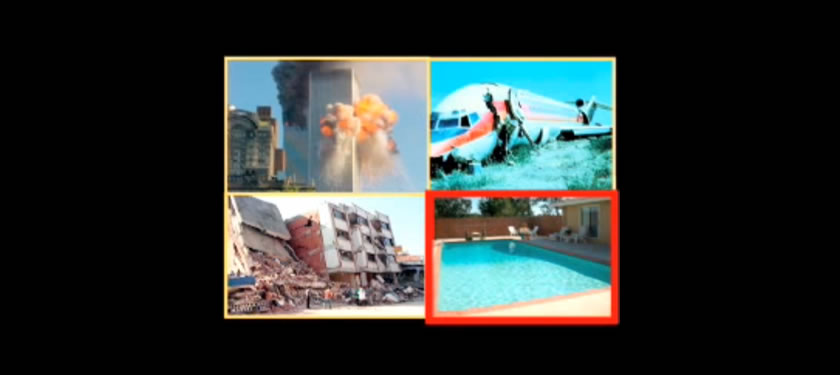Growing Skiing
What I’d do based on NSAA’s “what prevents you from trying skiing” survey results.


BLANCHARD
I applaud NSAA for taking the time to find out why people don’t ski.
It’s a really good step in a really good direction of identifying what’s standing in the way of people trying our sport.
#1 barrier to Ski/Ride = fear of injury, then $ @ski_vermont pic.twitter.com/zbHPQprquE
— Dave Gibson (@propdave) June 8, 2016
But identifying is only half the battle. The next step is addressing those issues.
The next step is action.
What to Do, What to Do
The first question to ask when you consider these results is simply this (and hopefully this is the next phase of their research):
How closely do non-skiers’ perceptions of skiing mirror the realities of skiing?
Think about it this way. What aspect of lift ticket prices get the headlines? That would be, of course,, the famous Vail holiday window-rate lift tickets. If that’s what non-skiers see on the news, that’s what influences their perceptions of ticket price.
In reality, you can buy great skiing for a small fraction of that Vail ticket price but, again, that’s not what gets headlines so that’s not non-skiers have in their brains to make those mental calculations.
Ask yourself what gets headlines in terms of injuries (avalanches, on-mountain deaths) and you start to realize that skiing’s perception from the non-skiing crowd is likely very skewed when compared with the reality of being a beginner or intermediate skier (which is what we’re trying to get non-skiers to become).
Myths
In effect, what you find is that skiing is full of a handful of myths around certain aspects of the sport. Said another way, skiing has gaps between reality and perception.
Gaps like:
- How much lift ticket costs vs how much people think they cost.
- How likely you are to get seriously injured vs how many people actually do get injured.
- How much gear/outerwear cost vs how much skiers actually pay for gear.
Some people do pay $150 for a lift ticket, but most don’t. Some people do get injured or die skiing, but most don’t. Some people do spent $2,000 on gear each season, but most don’t.
A Good Thing
Other other words we have pairs of insights on multiple aspects of skiing. Something extreme, something normal.
That extreme, however, gives us the opportunity to apply the marketing law of candor.
“Candor is very disarming. Every negative statement you make about yourself is instantly accepted as truth. Positive statements, on the other hand, are looked at as dubious at best. Especially in an advertisement.”
So here’s the idea.
We take the top concerns skiers have, admit it’s real, clarify that’s an extreme, and paint a much more realistic picture building on the trust we establish by leading with candor.
Price
For example, the message for the price of lift tickets might go something like this.
“A lot of people think skiing is really, really expensive. And they’re right. Skiing absolutely can be. At luxury resorts in Colorado, a single day of skiing can cost $170 during the holidays. Crazy, I know. But, you should probably know that in all 20 years of skiing I’ve never met a single skier who has paid that. Think of it this way, does that fancy restaurant downtown charging $200/plate prevent you from eating out? Of course not, because there are more affordable options. Same with skiing. During any given week more than 1/4 of all ski areas will offer a lift ticket that costs less than $40. It’s not free, but at about $4/hr, it’s actually cheaper than going to that new movie at the theater.”
See what I’m getting at? A simple formula of:
- Address a common perception about skiing.
- Admit that it’s true and even show the specifics.
- Do so in a way that clarifies that’s an extreme case.
- Use a simple analogy to put it in a familiar context.
- Further clarify with more context on how affordable it can be.
For something like injuries it could follow a similar thread and mention something like, based on the averages, you’d have to rack up 2,100 days on the slopes before you’re likely to tear an ACL.
Rinse and repeat with gear – “You know those $1,000 ski? In 10 years they’ll be at thrift stores for $20. And those brand new skis 10 years ago? They’re at thrift stores right now.” – and you’ve got a decent little content series that could be turned into 30 second videos and distributed by resorts, skiers, and industry associations alike to make a small dent in the negative perceptions of skiing.
Next Steps
I hope NSAA and others will take this one step further and compare the specifics of perceptions around things like price and injury (e.g., ask people how much they think a lift ticket costs) to find out if there is a gap.
If there is, that’s something we can address both individually and as an industry.
All it would take is a little education. It wouldn’t bust those myths completely, but it would help non-skiers make decisions based on perceptions that are closer to reality.
About Gregg & SlopeFillers
I've had more first-time visitors lately, so adding a quick "about" section. I started SlopeFillers in 2010
with the simple goal of sharing great resort marketing strategies. Today I run marketing for resort ecommerce and CRM provider
Inntopia,
my home mountain is the lovely Nordic Valley,
and my favorite marketing campaign remains the Ski Utah TV show that sold me on skiing as a kid in the 90s.
Get the weekly digest.
New stories, ideas, and jobs delivered to your inbox every Friday morning.
